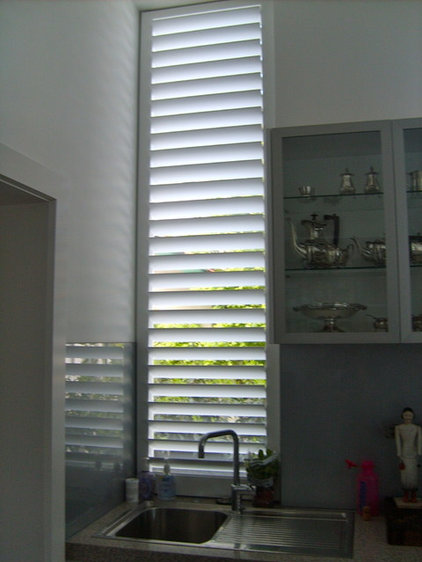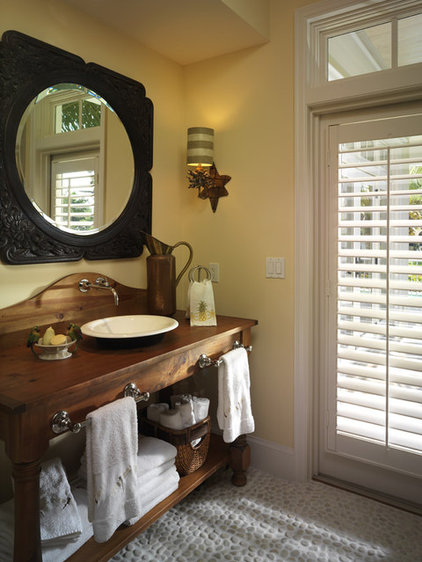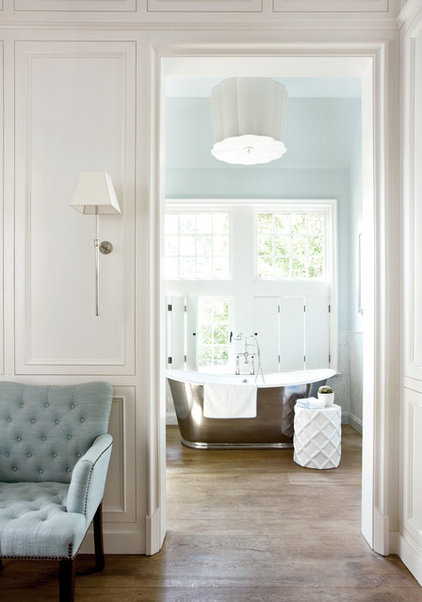11 Shutters to Enhance Every Window
These tall arched living room windows have plantation shutters (shutters with individual louvers that are 2 1/2 to 4 1/2 inches wide) with the exact same arched top.
Style tip: Don't be scared to use different styles of shutters on different windows in the same room. In this picture, full-height shutters mix with partial-height shutters.
Gorgeous black painted shutters create an instant focal wall in this cozy family room.
Style tip: Have your shutters painted in a neutral color that works for your home's interior. Use a gloss sheen to reflect light and grab the eye.
Café style shutters cover half of the window, offering privacy while still letting the light in.
Style tip: Use shutters made from vinyl in the kitchen — this material is very easy to clean.
Windows located high above eye level are known as clerestory windows. Place shutters on these windows as well as their kin to achieve one cohesive look throughout your home.
Style tip: Use shutters on all the windows in a room for a very traditional, Cape Cod–like feeling.
Often shutters have a more traditional feel — but not in this kitchen. The fact that this shutter goes all the way to the ceiling makes this window treatment feel very contemporary.
Style tip: The larger the louver, the more light you can let in.
A shutter is the perfect solution to any door with a full glass panel. In this bathroom, the shutter allows for privacy when the room is occupied and lets light in when it's vacant.
Style tip: Secure the louvers in the closed position for constant privacy.
These shutters are more of an architectual element than a functional window treatment in this bathroom. The horizontal lines that the individual louvers create is soothing to the eye.
Style tip: Use vinyl shutters in the bathroom to prevent warping due to steam and moisture.
Many doors have smaller windows on top known as transom windows. Transoms can be difficult to cover, but these were treated with custom-made shutters that fit perfectly.
Style tip: The louvers of these transom shutters all have to be manipulated one by one to either an open or a closed position. Adjust them to the middle position so they block just partial light — then you will never have to adjust them again.
No matter how large or small your windows are, shutters from floor to ceiling and wall to wall create the look of a slatted wall.
Style tip: This application is another way to take a more contemporary approach to window shutters.
These folding shutters have solid panels in place of standard operable louvers. The panels fold back on themselves when they're in the open position.
Style tip: Replace traditional hinges and hardware with more decorative options in your favorite finish to accentuate the shutter's uniqueness.
This modern take on the classic shutter was achieved by replacing individual louvers with tree branches.
Style tip: Depending on your own design style, insert other items instead of branches. Try colored glass, painted dowels or coordinating fabric.












